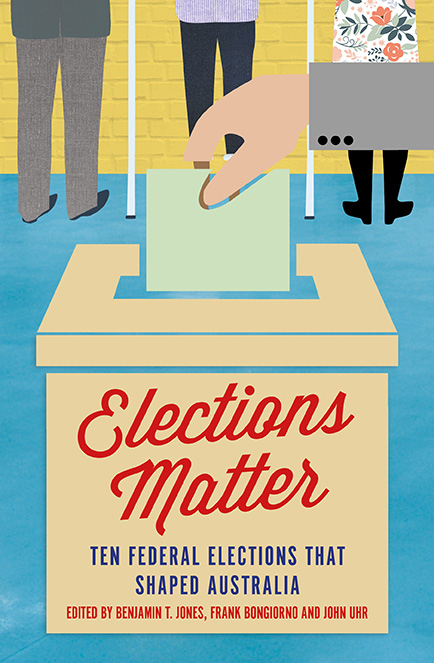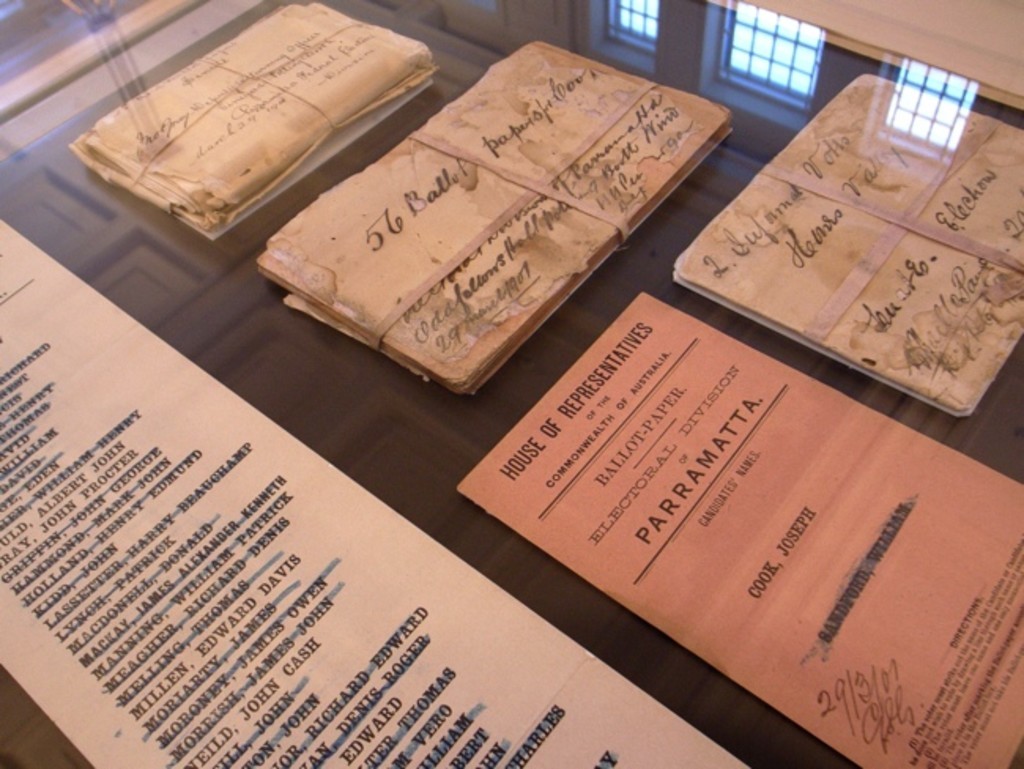‘Whether elections matter is a complex and ambiguous issue – as a consideration of this quirky collection discloses’, Honest History, 9 December 2018
Norman Abjorensen reviews Elections Matter: Ten Federal Elections that Shaped Australia, edited by Benjamin T. Jones, Frank Bongiorno and John Uhr
 In the final weeks of his term as prime minister in 1996, Paul Keating sounded a dire warning. ‘When the government changes, the country changes’, he told the National Press Club, arguing that a switch to John Howard would change Australia for the worse.
In the final weeks of his term as prime minister in 1996, Paul Keating sounded a dire warning. ‘When the government changes, the country changes’, he told the National Press Club, arguing that a switch to John Howard would change Australia for the worse.
But does the country really change? The answer is both complex and ambiguous: yes, a little at times; rarely, though, are the changes of a fundamental character. Continuity is more evident that discontinuity. Robert Menzies, for example, did not undo the social services legislation of the preceding Chifley government when he won in 1949. Malcolm Fraser, on winning government in 1975, retained many of the Whitlam-inspired initiatives, such as the Racial Discrimination Act. Bob Hawke, on winning in 1983, accelerated economic reform that had already been foreshadowed under Fraser, though not implemented.
Save for the first decade of the Commonwealth, when the party system was fluid, Australians generally do not change governments lightly; governments are usually given a fair go. The single exception was the truncated Labor administration of the hapless James Scullin, who came to office just as the Wall Street crash derailed the world economy and unleashed the miseries of the Great Depression. No Australian government, state or federal, survived.
Some elections, certainly, are more crucial than others in terms of issues faced and available options. But to nail down assertively a number of elections said to have shaped the nation is a big call. Certainly, as Benjamin Jones writes, this book is deliberately provocative in leaving out some more famous elections and including others less well remembered.
Excluded here, but mentioned in passing, are the elections of 1922, which brought the Country Party into play as a force; 1943, when the country turned to Labor in time of peril; 1949, when Robert Menzies came back in triumph and the battlelines of the Cold War were being drawn; 1961, when the myth of Menzies’s invincibility was all but shattered by the narrowest of wins; and 1972, when the Liberal era began by Menzies ended and the nation, belatedly, entered the late 20th century.
I would argue these elections were the real shapers: 1943 in firmly establishing Labor’s capacity to govern effectively; 1949 in setting the political tone for decades to come; 1961 in missing an opportunity to keep out of the Vietnam disaster; and 1972 in demonstrating the benefits of progressive social policies. The 1972 election was also important because Labor won it in the outer suburbs of Sydney and Melbourne, giving voice to new homeowners and urban fringe dwellers, and changing forever the demographic pitch in election campaigns.
But, addressing what we have in the book, 1901 was important in being the first and in establishing the electoral machinery; it was also important in showing what the decade of agitation and discussion over federation was actually about and how it worked in practice. The quaint notion that the Senate would act as a states’ house was quickly put to rest.
In 1910, Andrew Fisher’s Labor government was a world first – an elected government based on a party of the trade unions – and also the first election fought on modern party lines after the so-called Fusion of the Free Traders and Protectionists, which had united to fight Labor. The Fisher government enjoyed the distinction of being Australia’s first national majority government.
The election of 1929, which brought Scullin to office – a triumphant though short-lived return for Labor from the disastrous wartime split over conscription – was probably more about the massive divisions in the government’s ranks and Stanley Bruce’s mismanagement, not to mention revenge by the man Bruce displaced, Billy Hughes. While Scullin’s administration was riven by internal conflict over policy responses to the crisis – and the ALP ultimately split again – Alex Millmow makes the pertinent observation that it was probably only a Labor government that could have gathered sufficient support, especially from the unions, to pass the draconian economic stabilisation measures necessary to prevent Australia defaulting on its foreign loans.
In 1940, a hung parliament came at a crucial time for Australia’s involvement in World War II; it also weakened the first prime ministership of Robert Menzies. The unstable United Australia Party was already unravelling as Menzies travelled to London for top-level war talks, during which time he was ruthlessly undermined at home. Eventually the internal dissent led to his resignation. Yet, as Benjamin Jones writes, the direction of Australia’s war effort and the agenda of the early postwar era were dramatically shaped by the election of 1940.
The election of 1954 looks at how Labor’s Bert Evatt almost made it. It also asks the always intriguing question of the role played by the Petrov affair in the Cold War atmosphere of the time.
The election of 1969 – immortalised in David Williamson’s play, Don’s Party – is a worthy inclusion here, demonstrating as it did to a generation of Labor voters and new voters alike that the Liberal-Country Party monopoly on government could not be taken for granted, and that a new, articulate and intelligent leader in Gough Whitlam spoke to many who had not voted Labor before. The big swing against the government was also a death sentence for John Gorton’s prime ministership.
 1901 election materials, division of Parramatta (MOADOPH)
1901 election materials, division of Parramatta (MOADOPH)
In 1987, Labor might have had trouble winning a third term but for the dramatic intervention of the populist Queensland premier, Joh Bjelke-Petersen, and his ‘Joh for PM’ campaign, which knocked the coalition’s campaign off the rails. As will eventually emerge, the full story of this battle has not yet been told – especially the element of high-level collusion with Bjelke-Petersen from within the Liberal Party itself.
The return of John Howard in 1996 is usefully covered here, introducing Australia to the policies of the New Right that had so recently seemed like fantasies. The election of 2001 (a Race Odyssey?) took us into new territory over the Tampa, the politics of fear and the demonisation of asylum seekers.
On to 2010, and the first hung parliament in 70 years brought new uncertainties into the political arena, the reverberations from which continue to be felt. Elections do matter, but the arguments will continue as to how much they matter and what, if anything, really changes. Despite its quirkiness, this collection is a most useful addition to our political history.
* Dr Norman Abjorensen is a political historian. He is the author of The Manner of Their Going: Prime Ministerial Exits from Lyne to Abbott (2015). For other material by Dr Abjorensen consult our References by author: A-Z. His history of democracy will be published in 2019 by Rowman & Littlefield and he writes regularly for Inside Story.


Leave a Reply
You must be logged in to post a comment.